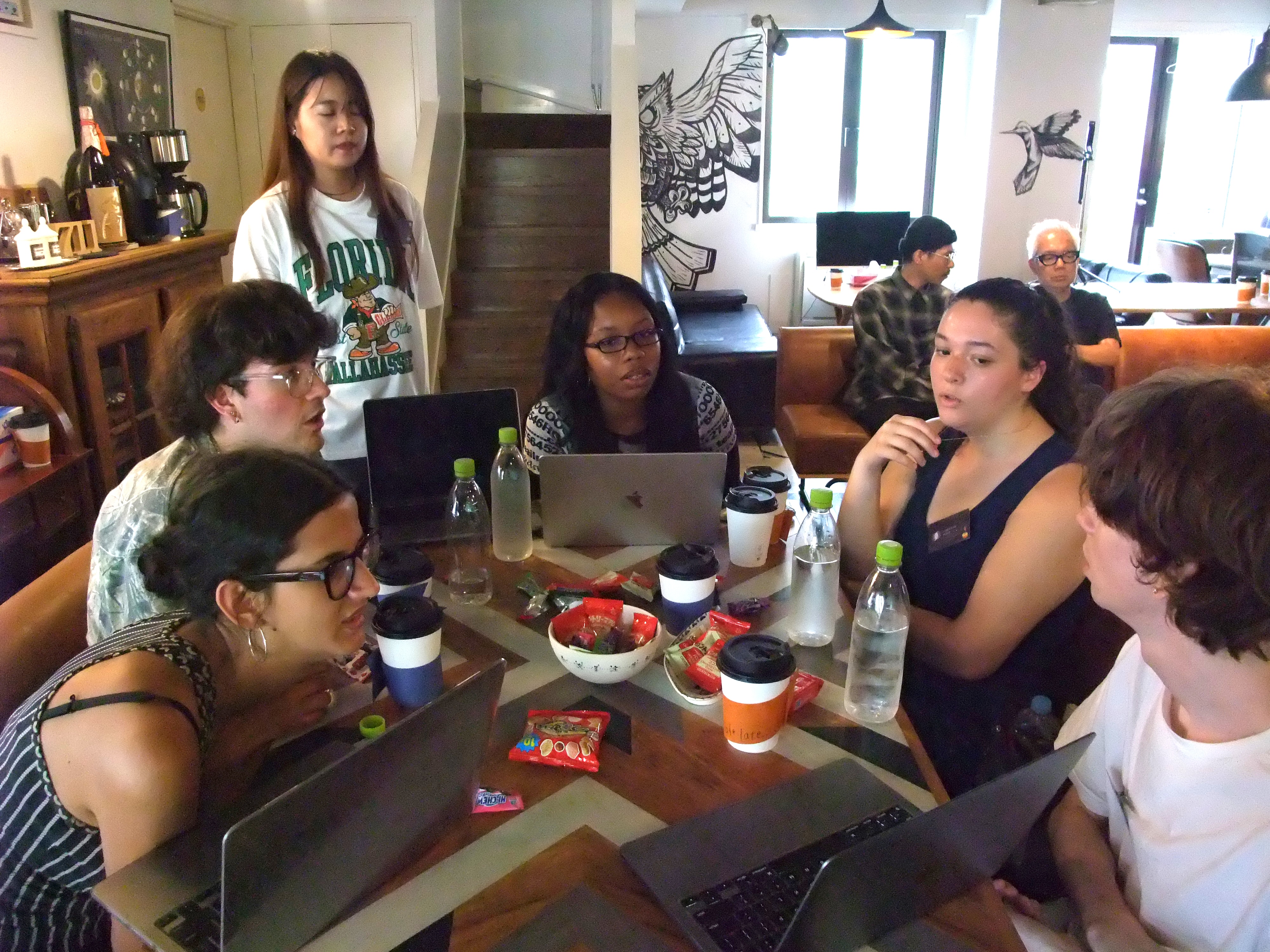Hello, this is Miho, a student intern at Archeco!
In the previous "Planning Edition," I shared how we planned the workshop and prepared together with everyone in the company.
And finally, the day arrived—
The students from DePaul University arrived at the office, and amidst a mix of nerves and excitement, the workshop began!
In this "Workshop Edition,"
I'll share how the students refined their UX/UI designs using AI tools,
what the experience was like, and the insights that emerged from it.
Exploring UX/UI Design Using AI Tools
The first activity was an AI tool hands-on session!
Using tools like UIZARD and ChatGPT, the students took on the challenge of prototyping and improving designs in the AI era.
In fact, for most DePaul students, this type of AI-supported design process was almost entirely new.
Especially with UIZARD, many said, “I didn’t even know this existed!”
They were amazed when wireframes were generated in just a few seconds by typing only about 300 characters into the prompt:
“No way…!” was a common reaction.
Of course, compared to the wireframes they had created manually in advance,
there was still plenty of room for improvement,
but discovering a tool that could produce a decent-quality wireframe in about one-tenth of the time raised a new question:
How do we balance "efficiency" and "human involvement"?
Interestingly, it seems that university classes haven’t covered design support or feedback systems using AI at all,
so this experience itself served as a valuable opportunity to broaden their perspective on "how AI can be used in design"!
What was particularly striking:
The attitude of not treating AI's output as the "final form" but going beyond and refining it further
The ongoing dialogue that asked, "Who is this design really for?" beyond just "efficiency"
The students compared the wireframes they had drawn in advance with the AI-generated ones side-by-side, saying things like,
“We did better in this part, but here the AI's version is simpler and easier to understand,”
and combined the best elements of both to create the final version—this process was truly a demonstration of human-AI co-creation in UX design!
They even asked ChatGPT to compare their wireframes with the AI-generated ones,
asking it to evaluate “Which one is better from a UX perspective?” and to suggest improvement ideas—a sort of brainstorming session.
Some students initially had negative impressions like “AI = cheating” or “It contributes to environmental destruction,”
but after actually using it,
they began to shift their views: “Depending on how you use it, it’s a great tool that can broaden your perspective.”
Passionate Discussions
After experimenting with the AI tools, next came the team wireframe editing time!
This wasn’t just about “making slight adjustments to what the AI created,”
but a thorough re-evaluation: “Is this really okay from the user's perspective?”
“This button is suggested by AI, but can users really understand its function at a glance?”
“This color scheme looks clear, but is it considerate of color vision deficiencies?”
“The design looks polished, but would beginner users feel lost?”
The students questioned every small UI element, constantly asking,
“Is this really helping the user?”
Even in moments when they got too caught up in their own opinions or preferences,
they were able to reassess thanks to feedback and insights from their group members.
Some groups even got so heated in their debates that it felt almost like a fight...
“That’s definitely not okay!” “No way, this version is way more user-friendly!”
Voices clashed, and neither side wanted to back down—
but underlying all of that was a genuine passion for creating better UX.
Even we, the organizers, were constantly impressed by their seriousness and energy.
Rather than simply dividing tasks,
they asked each other, “Why did you do it that way?”
or said, “If it were me, I might do this,”
and worked together to build the best final version—a truly intensive and collaborative experience.
In this way, they took the initial proposals generated by AI
and polished them with a human perspective, turning them into designs filled with both usability and intent.
Hand-Drawn Wireframes × AI Generation
In this workshop, we didn’t just focus on using AI tools—
we emphasized a process of “think it through by hand first” → “then supplement it with AI.”
By first putting their ideas into words and visual form themselves,
then generating wireframes using AI,
they were able to ask, “How well did our ideas hold up?”
and “What did the AI add or enhance?”
comparing the two and discovering new improvements and insights.
Even here, the students didn’t cling too tightly to their own perspectives or pride in their work,
but centered the discussion around “How can we make this a better experience for users?”
as they refined the final wireframes—and that was very impressive to see.
Conclusion: Facing Design in the Age of AI
Through this workshop,
we believe the students were able to experience not just the convenience of AI tools,
but also the importance of “thinking things through to the very end as humans.”
Precisely because we live in an era where AI is evolving,
“thinking,” “asking questions,” and “engaging in dialogue”
may become more essential than ever in UX/UI design.
In the next “Discussion Edition,”
we’ll dive deeper with the students after the workshop,
exploring questions like “What is the role of UX designers going forward?”
Stay tuned for that as well!

